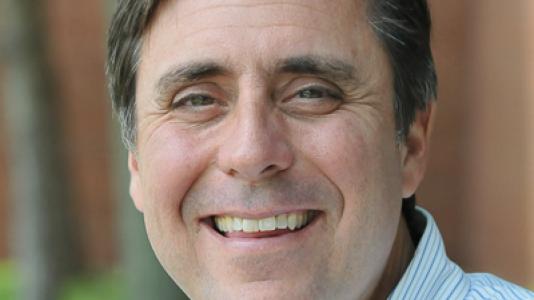
Argonne Deputy Director for Programs Mark Peters testified today before the House Committee on Foreign Affairs Subcommittee on Asia and the Pacific during the hearing “What’s Next for the U.S.-Korea Alliance”.
The subcommittee asked Peters to address in his testimony the technical and scientific challenges to nuclear fuel recycling and to give an overview of existing and future technologies, including those key to cross-border research cooperation to recycle nuclear fuel. U.S. Rep. Don Manzullo, R-Ill., chairs the subcommittee.
Appearing below is the transcript of Mark Peters’ remarks to the House Committee.
Recycling Used Nuclear Fuel: Balancing Energy and Waste Management Policies
Testimony to U.S. House of Representatives
Committee on Foreign Affairs
Subcommittee on Asia and the Pacific
Mark T. Peters, American Nuclear Society
June 6, 2012
My name is Mark Peters, and I am the Deputy Laboratory Director for Programs at Argonne National Laboratory. However, today I am speaking on behalf of the American Nuclear Society; my remarks should not be considered as an official statement from Argonne or the Department of Energy.
I appreciate this opportunity to present the views of the American Nuclear Society (ANS) on used nuclear fuel recycling as a means to achieve an integrated solution to energy and waste management policy. The ANS is a not-for-profit, international, scientific, and educational organization with nearly 12,000 members worldwide. The core purpose of ANS is to promote awareness and understanding of the application of nuclear science and technology. The ANS also wishes to acknowledge its longstanding professional collaboration with the Korean Nuclear Society (KNS). For more than 40 years, our two organizations have worked together to promote the safe and secure use of nuclear technology and materials.
For decades, the United States has grappled with the multiple challenges of crafting a long-term solution for the management of used nuclear fuel. These persistent challenges have taken on new urgency in the wake of the accident at Japan’s Fukushima Daiichi nuclear power plant, which has focused international attention on used nuclear fuel storage. Although the challenges of waste management require close scrutiny, these issues are most effectively considered within the context of an integrated policy for nuclear energy and nuclear waste management. Unfortunately, the United States is unique in its lack of such an integrated policy. Most other nations that rely on nuclear energy, including France, Russia, China, Japan, and Republic of Korea, have policies in place that promote development of used fuel recycling and advanced fast reactors, in order to ensure the long-term sustainability of their nuclear investments. We must consider our nuclear energy technology collaborations and partnerships within this global context.
At present, the United States’ strategic investments in advanced nuclear energy technologies are lagging; as a result, we rely increasingly on collaborative arrangements with foreign research institutions to conduct research in these areas. These collaborations provide advantages to both parties, and the United States has benefited from them. However, close alignment between government and nuclear industries in these nations speeds the international deployment of these cooperatively developed technologies, such as used fuel recycling and fast reactor technologies, while the United States has moved much more slowly in its adoption of them.
The Republic of Korea has publicly expressed its interest in incorporating electro-metallurgical reprocessing technology, commonly known as “pyroprocessing,” into its long-term nuclear fuel cycle plans. Pyroprocessing offers several potential benefits over current aqueous recycling techniques, such as the PUREX process being used in France and Japan today. These include the ability to recover minor actinides, which otherwise contribute significantly to the long-term radiotoxicity of used nuclear fuel; fewer releases of fission gases and tritium; and, the lack of production of pure plutonium, which helps to address proliferation concerns. Clearly, there will be engineering challenges inherent in the development of pyroprocessing technology, as there are with any other advanced manufacturing processes. However, these challenges can be addressed through joint research and development activities, and solving these challenges will have important implications for the United States as well as the Republic of Korea.
The American Nuclear Society believes that nuclear fuel recycling has the potential to reclaim much of the residual energy in used fuel currently in storage as well as used fuel that will be produced in the future, and that recycling offers a proven alternative to direct disposal of used fuel in a geological repository. In other nations, recycling of nuclear fuel with proper safeguards and material controls, under the auspices of the International Atomic Energy Agency (IAEA), has demonstrated that high-level waste volumes can be reduced safely and securely while improving the sustainability of energy resources.
It is the opinion of the ANS that the United States should begin planning a thoughtful and orderly transition to nuclear fuel recycling in parallel with the development of a geologic repository. Recycling would enhance the repository’s efficiency, eliminating the need for most complex and expensive engineered barriers and reducing the timeframe of concern from more than 100,000 years to a few hundred years.
The ANS also believes that the United States should accelerate development of fast spectrum reactors, which are uniquely capable of generating energy while consuming long-lived waste. Six decades ago, on December 20, 1951, scientists and engineers from Argonne National Laboratory started a small electrical power generator attached to an experimental fast reactor, creating enough energy to power four 200-watt electrical bulbs. That historic achievement demonstrated the peaceful use of nuclear energy and launched today’s global commercial nuclear energy industry. But it should not be overlooked that the first electricity generated through nuclear energy was produced using a fast reactor.
In closing, let me reiterate that the ANS believes that nuclear energy has a significant role to play in meeting the global energy demands of the 21st century, and that a global expansion of nuclear energy can be achieved safely and securely. I look forward to your questions. Thank you.